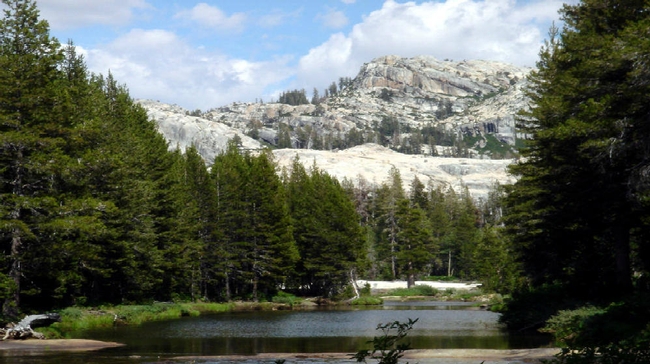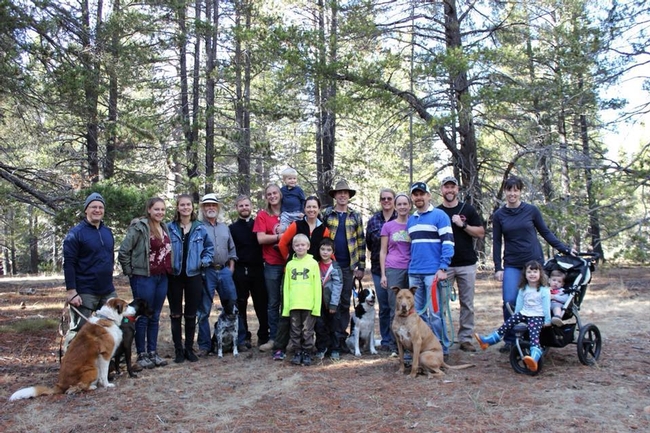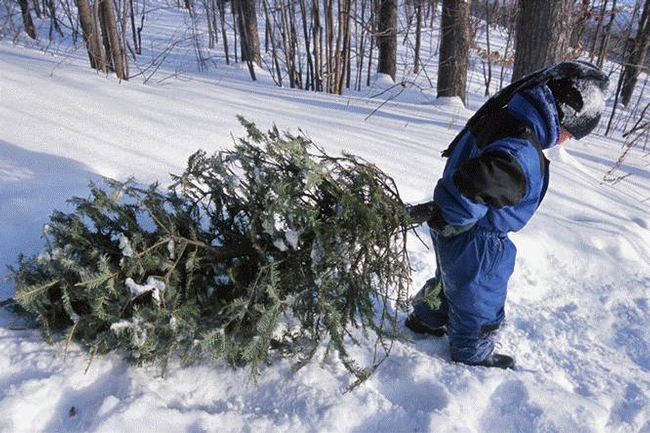The smart harvest of Christmas trees leads to a healthier forest
Most California forests have too many trees, so carefully selecting pines, cedars or firs in natural areas to enjoy for the Christmas season is good for the mountain landscape.
“It's a great idea to cut down young trees for fire safety and vegetation management,” said Susie Kocher, UC Cooperative Extension forestryadvisor in the Central Sierra. “The earlier you do it, the less work it is to manage the trees in the long run.”
Kocher lives and works in Lake Tahoe. Every year, she gathers her family and friends to find forest-fresh Christmas trees in the Lake Tahoe Management Area. Of the 18 national forests in California, 11 allow Christmas tree cutting with the purchase of a $10 permit. (See the list below.) People who own mountain cabins or other forestland may invite family and friends to help thin trees on their personal property, which can then be used for the holiday season. However, never harvest trees on public or private property without permission.
“We have a lot of small trees on public and private forest lands because of fire suppression,” Kocher said. “They're all competing with one another and many will ultimately die. A smart harvest of Christmas trees can improve the forest by helping with thinning.”
People with permits to cut down Christmas trees in national forests must follow strict guidelines. Follow the same guidelines on private land to ensure a smart harvest. Before chopping down the tree, be sure it is within 10 feet of another living tree, the trunk is no more than 6 inches in diameter and the stump left behind is no higher than 6 inches off the ground. Some national forests limit the harvest to certain tree species.
Despite committing to these guidelines when obtaining a permit, Kocher said she has seen some Christmas tree harvesters make ill-advised choices.
“Some people are too lazy to find a good tree and will cut the top off a large tree,” Kocher said. “You can be driving around and see what looks like a poor old Dr. Suess tree, which is what grows from the ugly remnant left behind in the forest.”
Such irresponsible Christmas tree cutting has led some forests to discontinue Christmas tree harvesting for personal use.
There has been ongoing debate about whether a fake tree or real tree is more environmentally friendly, but for Kocher, there is no question.
“Fresh real trees are a renewable resource, fake trees are not,” she said. “It's an agricultural product. You can contribute to a local farmers' income or you can help thin the forest. Picking and bringing home a fresh tree, decorating it and smelling it defines the season for me. Without it, I don't think it would feel like Christmas.”
U.S. National Forests in California that allow Christmas tree cutting with a permit are:
- Inyo National Forest
- Eldorado National Forest
- Klamath National Forest
- Lake Tahoe Basin Management Area
- Lassen National Forest
- Mendocino National Forest
- Modoc National Forest
- Plumas National Forest
- Shasta-Trinity National Forest
- Six Rivers National Forest
- Tahoe National Forest
Read more:





Posted by Ashley Sison on May 22, 2021 at 6:16 AM